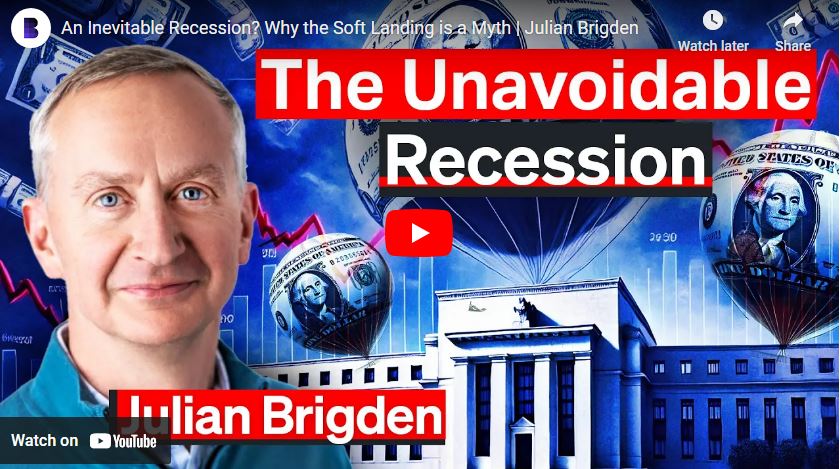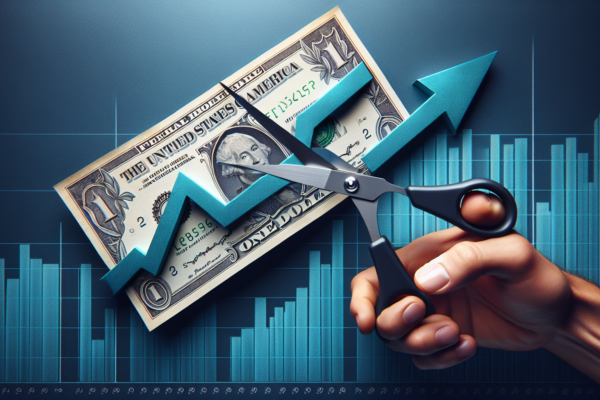Key insights:
- The odds of a soft landing are statistically small, with historically more tightening cycles resulting in hard landings.
- The buildout of the internet in the 90s is similar to what AI is doing now, delivering massive productivity gains.
- “I’m pretty damn certain that Goldilocks is not the base case I would say that’s the Rarity the Oddity.”
- The reality is that 9 out of 12 tightening cycles since the 1960s have resulted in hard landings, leading to recessions.
- The unemployment rate is secularly low at 4.1%, but once it trends and becomes a momentum signal, it could potentially blow out.
- The data would say definitive recession right all of the sort of metrics that I look at a lot of them are pointing to they’ve all crossed their moving averages.
- The real economy sets profits, corporate pricing, and stock prices, not the other way around.
- “I just think if we’re going to end up all in the same place. We’re going to end up probably all with the synchronized recession when it comes to things like the currency markets.”
- There is a possibility of opportunistic disinflation leading to a mispriced bond market and a potential recession.
- Gold has massively outperformed over 35 years, which for a zero yielding asset is absolutely amazing.
- The risk is that the dollar is structurally massively overvalued, creating a self-reinforcing cycle that can turn into a vicious down cycle.
In an economic climate dominated by discussions around the possibility of a recession, the concept of a “soft landing” engineered by the Federal Reserve has become a focal point of debate. At the heart of this debate is the question of whether it’s possible to slow down an overheated economy without triggering a recession, a task the Federal Reserve has undertaken with varying degrees of success over the years. This issue is not only of significance to investors and economists but also impacts the broader public, as the decisions made by the Federal Reserve have far-reaching consequences on employment, inflation, and overall economic stability.
The following exploration into the feasibility of a soft landing delves into the historical context of economic tightening cycles, critically examines the factors that undermine the optimism surrounding a soft landing, and identifies potential triggers that could lead to a hard landing instead. By offering a data-driven analysis that integrates insights from economic history with the current policy environment, this article aims to provide a comprehensive understanding of why many experts, including Julian Brigden, consider the notion of a soft landing in the current economic cycle to be more myth than reality. Through this examination, readers will gain insight into the complex interplay between monetary policy decisions, economic indicators, and the inherent uncertainties that challenge the Federal Reserve’s pursuit of a soft landing.
The Historical Context of Economic Tightening Cycles
In the realm of economic policy, the Federal Reserve’s attempts to manage economic overheating through rate adjustments have historically presented a complex challenge. This section delves into the historical context of economic tightening cycles, shedding light on the intricate balance the Federal Reserve strives to maintain.
Examples from the 1960s to present
Historically, the Federal Reserve has navigated numerous economic cycles, each presenting unique challenges and outcomes. The concept of a ‘soft landing,’ where the economy slows just enough to curb inflation without triggering a recession, has often been viewed with skepticism. Insights from financial analysts and historical data indicate that achieving this delicate balance is exceedingly difficult, often influenced by external factors beyond mere policy adjustments.
Statistics on soft vs. hard landings
The optimism surrounding the possibility of a soft landing is contrasted starkly by statistical data. For instance, findings from a financial survey highlighted that while 84% of professionals anticipated a no or soft landing scenario, historical trends suggest a different reality. The survey noted that goods inflation, which is crucial for economic stabilization, remains unpredictably volatile despite base effects that temporarily drive inflation rates to record lows. This volatility underscores the challenges faced by the Federal Reserve in predicting and controlling economic outcomes effectively.
Through these examples and statistics, it becomes evident that the Federal Reserve’s task of achieving a soft landing is fraught with complexities, making the ideal of a smooth economic adjustment more myth than achievable reality.
Factors Undermining the Soft Landing Theory
Labor Market Rigidity plays a crucial role in undermining the Federal Reserve’s efforts towards a soft landing. The current scenario, where inflation remains stubbornly high above 5%, indicates a strong labor market that resists quick adjustments. This rigidity suggests that significant rate cuts, as anticipated by some market participants, might be ineffectual unless there is a corresponding weakening in core services, which inherently involves softening the labor market conditions.
Persistent Inflation Rates further complicate the Federal Reserve’s strategy. Despite optimistic projections by some financial analysts, as highlighted in the Bank of America’s flow show survey, where 84% of professionals expected a soft or no landing scenario, the reality of inflation dynamics tells a different story. Goods inflation, although at its second lowest rate in 65 years due to base effects, is poised to rise as these effects dissipate. This anticipated increase in inflation rates poses a significant challenge to achieving the soft landing that the Federal Reserve aims for, reflecting the inherent difficulties in managing economic downturns without triggering a recession.
Potential Triggers for a Hard Landing
Equity Market Dynamics
Current market conditions reflect a precarious optimism, with 84% of professionals in a recent Bank of America survey anticipating a soft or no landing scenario. This sentiment is fueled by a temporary decline in goods inflation, which sits at its second lowest rate in 65 years due to base effects. However, as these base effects diminish over the coming months, there is a significant risk of inflation rates rebounding. This potential spike in inflation could destabilize the markets, particularly if goods inflation does not continue to fall as expected. The interconnectedness of asset ownership across various sectors—from technology stocks to precious metals—means that any shock could trigger a widespread market correction, pulling all assets down collectively.
Federal Reserve Policies
The Federal Reserve’s anticipated rate cuts, potentially up to four times in the next 12 months, hinge on the assumption of receding inflation risks. However, the persistent high inflation rate above 5% challenges this outlook. The labor market’s rigidity further complicates the Fed’s ability to execute a soft landing, as effective rate cuts would require a corresponding softening in core services, which directly impacts labor conditions. This delicate balancing act, akin to achieving a “financial triple suco,” underscores the difficulty and potential for missteps by the Federal Reserve in navigating towards a soft landing without precipitating a hard economic downturn.
Conclusion
Through the lens of historical patterns and the current economic indicators, the myth of a soft landing in the event of economic tightening by the Federal Reserve seems more elusive than ever. Critical examination of past economic cycles, juxtaposed with the present state of inflation and labor market rigidity, highlight the monumental challenge of easing an overheated economy without causing a recession. These insights underscore the inherent complexities and uncertainties that the Federal Reserve faces in its attempts to navigate such precarious conditions, revealing a pattern where the hopeful outcome of a soft landing often gives way to the stark reality of economic downturns.
The significance of understanding these economic dynamics cannot be overstated, especially in a climate where investment and fiscal decisions hang in the balance. The analysis presented draws not only on historical evidence but also on current trends that shape our economic expectations and realities. For those keen on exploring further into the intricacies of economic policies and their impacts, watch the full video here. As we consider the path ahead, it becomes imperative to recognize the potential for new research and discussions that could pave the way for innovative approaches to managing economic shifts, thereby enhancing our preparedness for whatever lies beyond the myth of the soft landing.
Main questions
Is there a possibility of a recession occurring in 2025?
Although many predicted a recession last year that did not materialize, there is still a possibility of a mild recession in 2025, according to Basu. He highlights rising consumer debt and the uncertainty surrounding the upcoming election as significant economic challenges that could contribute to this potential downturn.
What are the consequences if a recession occurs?
During a recession, economic opportunities diminish significantly, leading to business failures, fewer job openings, and reduced wages. While recessions are not an annual occurrence, they are not rare either. The National Bureau of Economic Research has documented recessions in the U.S. dating back to 1857, indicating their periodic impact on the economy.





